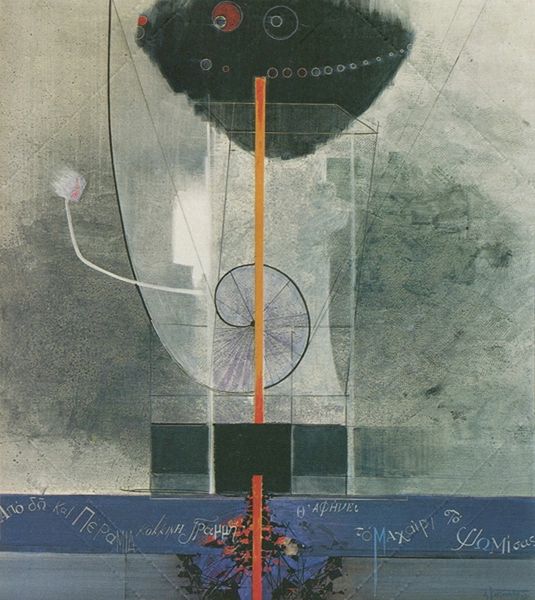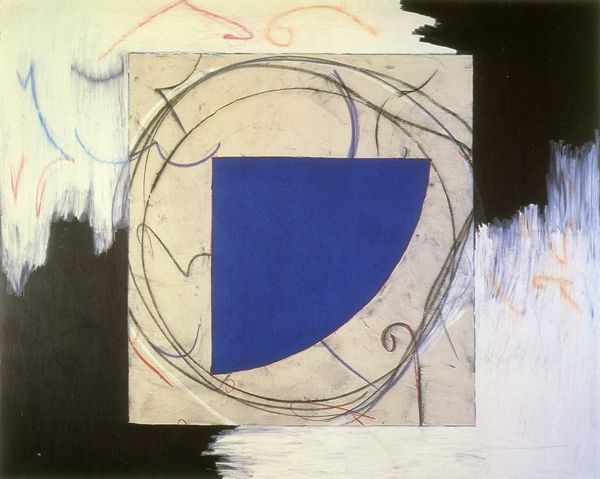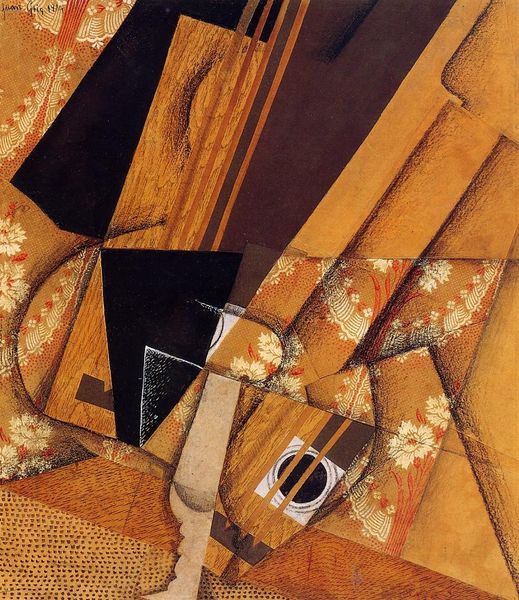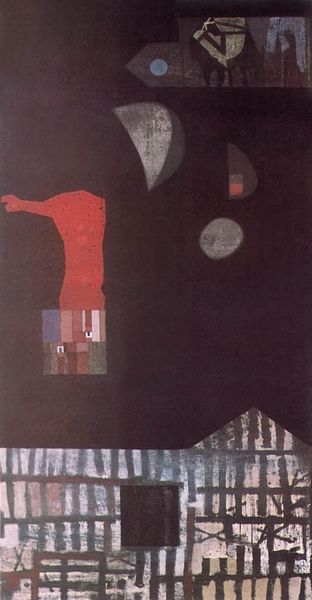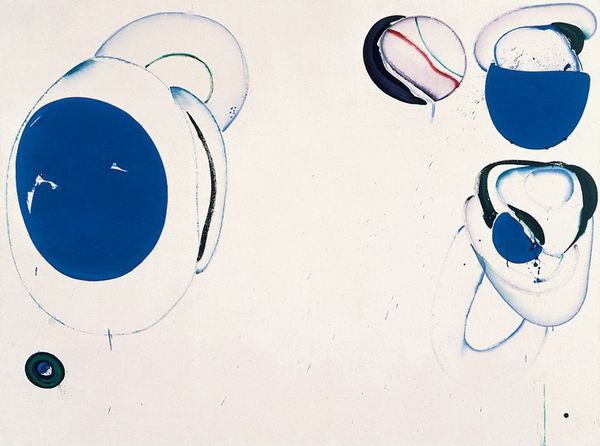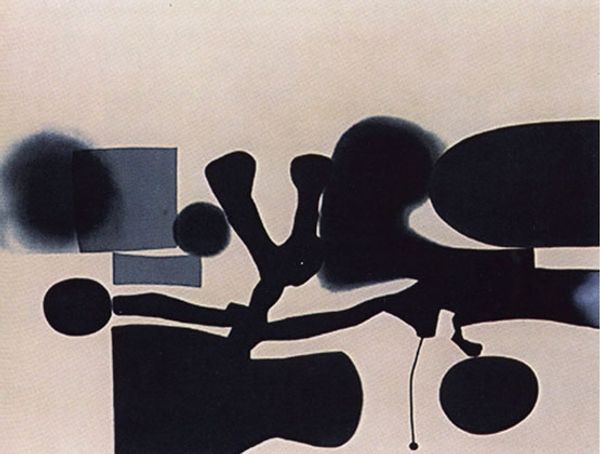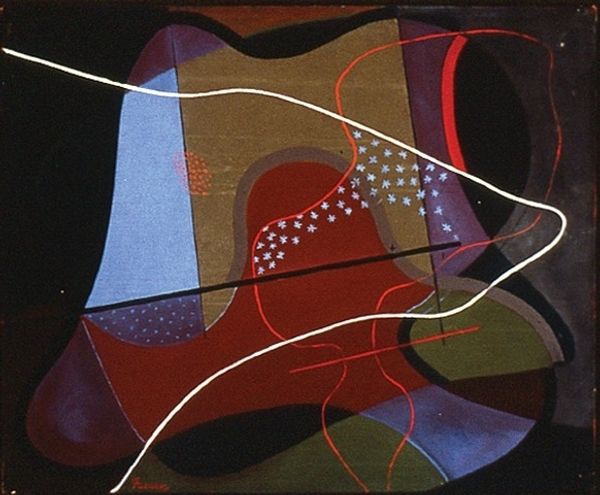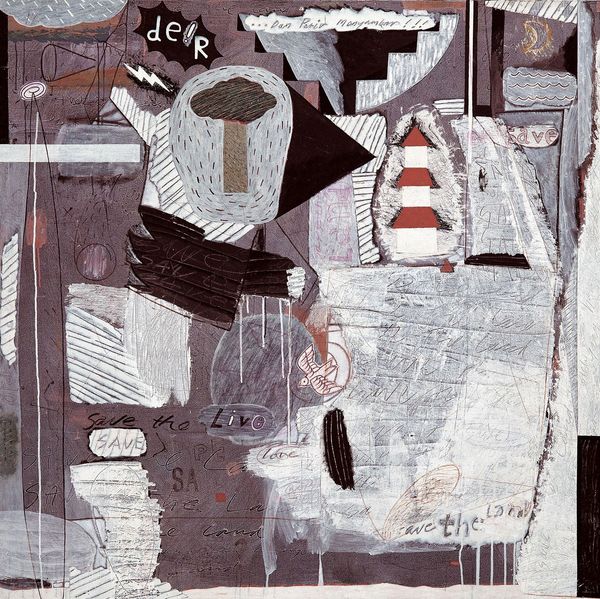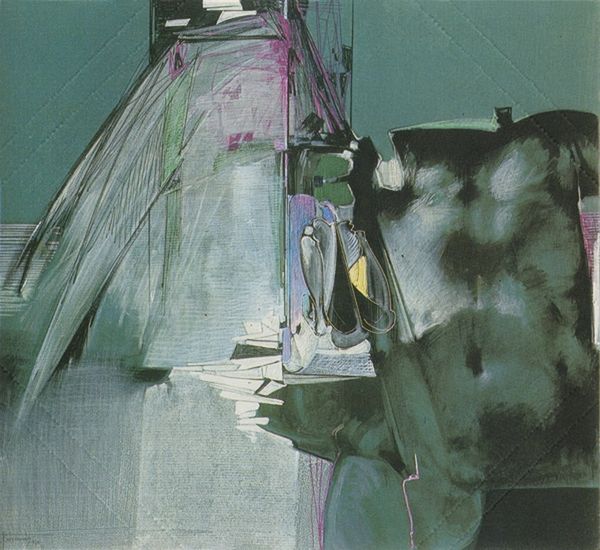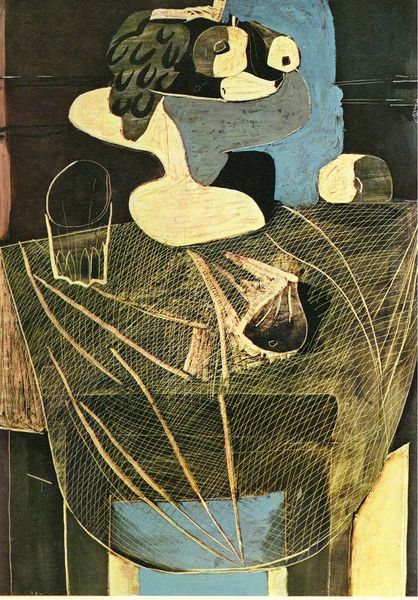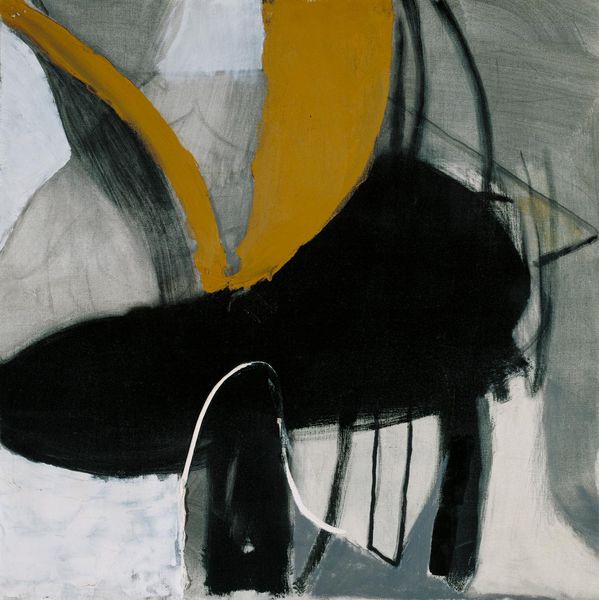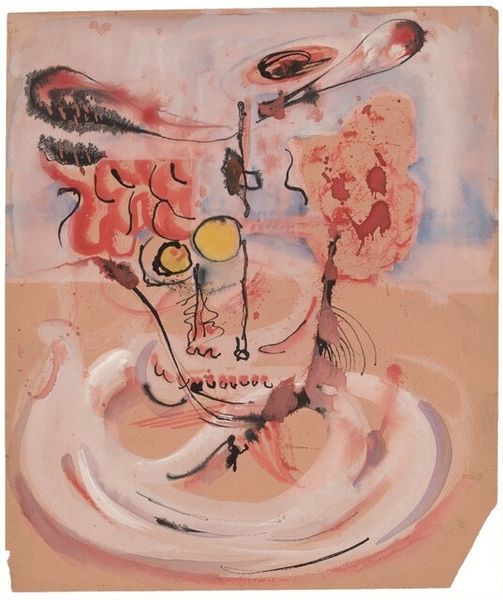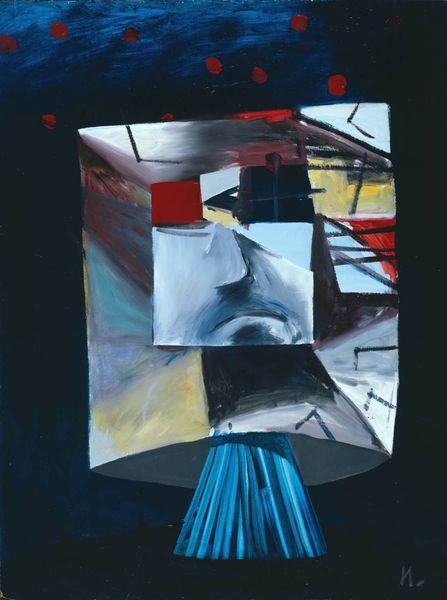
painting, oil-paint
#
portrait
#
abstract-expressionism
#
contemporary
#
painting
#
oil-paint
#
figuration
#
intimism
#
modernism
Copyright: Francis Bacon,Fair Use
Curator: Francis Bacon's "Figure on a Folding Bed," painted in 1963, is a stark example of his unsettling figurative style. It’s oil on canvas, a medium he frequently used to convey the raw physicality of the human form. Editor: Immediately, I feel a deep sense of isolation. The swirling distortions of the figure, that desolate space... It’s almost claustrophobic, even with the large canvas. There's definitely a feeling of being trapped here. Curator: That's a very common reaction to Bacon's work. Consider the socio-political climate of the time. Post-war anxiety was still palpable. Bacon’s work often reflects this unease, this sense of a fractured world struggling to make sense of itself after unimaginable trauma. Editor: Absolutely. I think the visible brushstrokes, almost violent in their application, speak to the brutality of the mid-20th century. And that odd geometric frame he often uses—it’s like observing the subject under a microscope, exacerbating a sense of scrutiny and vulnerability. There's a clear parallel with queer existence and visibility, like being forced to exist while constantly being scrutinized. Curator: Indeed. The intimate yet grotesque portrayal also reflects Bacon’s complex relationship with his own identity and sexuality within a society that often stigmatized such expressions. The composition traps the figure in a vortex, almost deconstructing the familiar imagery of portraiture that usually intends to memorialize a noble or elevated figure, but it does something quite different. Editor: And look at that shadowy form below, seemingly reflected or perhaps a premonition? There's a cyclical feeling, as though history, personal or collective, is doomed to repeat itself. Even now, reflecting on themes like bodily autonomy and political repression, Bacon’s art serves as a relevant and provocative voice. Curator: Well, considering Bacon’s background and the broader cultural context, it's an enduring symbol of post-war existentialism and the fragility of the human condition. Editor: It’s truly a testament to how art can challenge, provoke, and reflect the complex intersectionality of identity and existence.
Comments
No comments
Be the first to comment and join the conversation on the ultimate creative platform.
